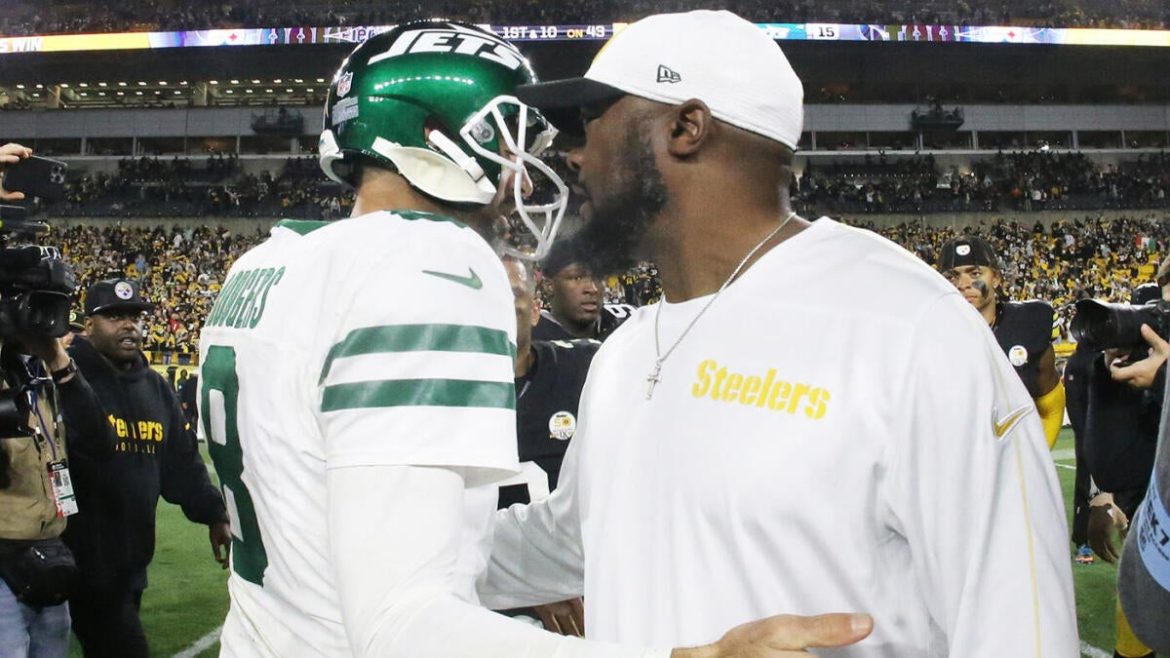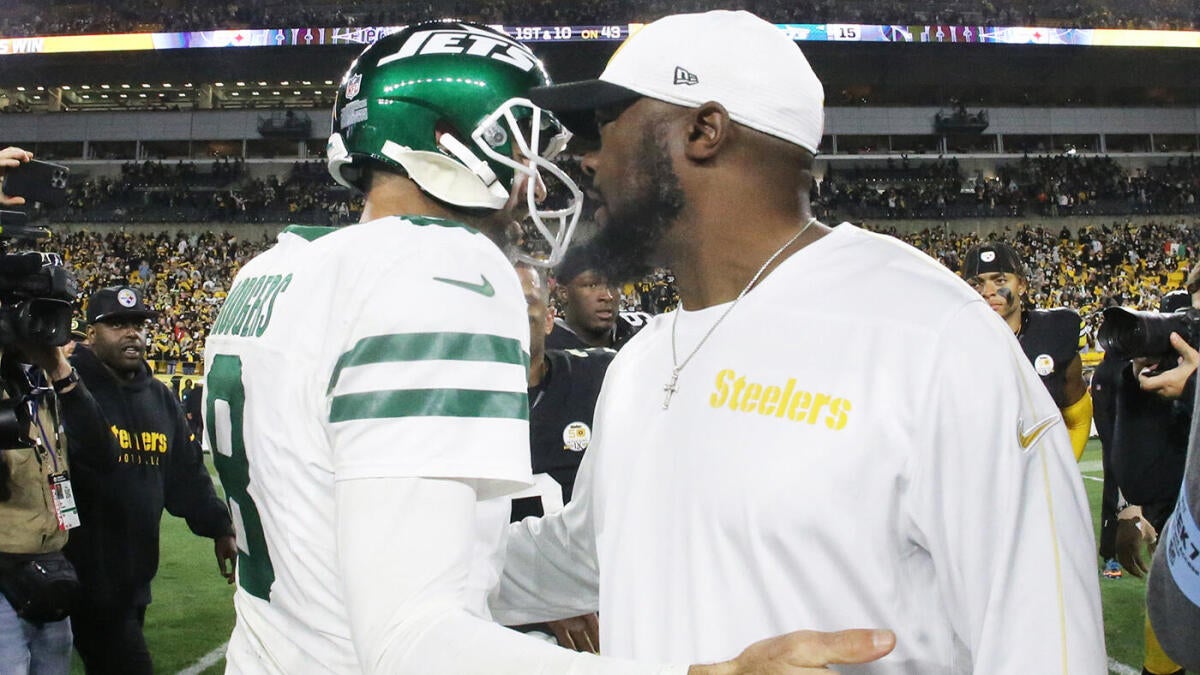Aaron Rodgers’ Journey to the Pittsburgh Steelers: An In-Depth Analysis of the 2025 NFL Season Move
The 2025 NFL season promises to be an intriguing chapter for both Aaron Rodgers and the Pittsburgh Steelers, as the future Hall of Fame quarterback has opted to join the Steel City on a one-year contract. This move marks a significant moment in Rodgers’ storied career and presents a fresh dynamic for the Steelers. This analysis explores the key factors, potential implications, and broader context surrounding this high-profile signing.
The Background: Rodgers’ Decision and Contract Details
After months of speculation, deliberation, and negotiations, Aaron Rodgers, a four-time NFL Most Valuable Player and considered one of the best quarterbacks of his generation, has agreed to a one-year deal with the Pittsburgh Steelers. Reports confirm that Rodgers plans to officially sign the contract ahead of the team’s minicamp, with the deal finalized in early June 2025.
Rodgers’ arrival in Pittsburgh follows a notable offseason where he explored options, including a reported preference to play for the Minnesota Vikings. However, despite the Vikings being his top choice, the eventual agreement with the Steelers was facilitated through persistent dialogue, spearheaded by head coach Mike Tomlin. Tomlin’s role has been repeatedly credited as a decisive factor in Rodgers committing to the Steelers, highlighting the strong relationship and mutual respect between the two.
Strategic Significance for the Steelers
The Steelers’ decision to bring in Rodgers signals a critical moment for the franchise. Previously, the team’s quarterback position underwent turbulence, including the transitions from Ben Roethlisberger to Russell Wilson and now to Rodgers. The team evidently continues to place faith in seasoned, veteran quarterbacks over the traditional route of developing younger prospects. This pattern carries both potential rewards and risks.
On one hand, Rodgers brings a wealth of experience, elite skills, and leadership qualities that the Steelers likely hope will stabilize the offense and improve their competitiveness immediately. His presence is expected to ignite the team’s attack, as NFL commentators anticipate Rodgers will “light up” opposing defenses, notably in a season-opener against the New York Jets, a game generating significant early interest.
On the other hand, concerns about signing an aging quarterback persist. Rodgers, at 41, faces natural questions about longevity, physical readiness, and ability to adapt to a new offensive scheme. The challenges of relying on an older signal-caller are underscored by the Steelers’ previous gambles with aging QBs, which yielded mixed results. This dynamic will test the Steelers’ coaching staff and front office’s capacity to manage player health, performance expectations, and roster flexibility.
Mike Tomlin’s Leadership and the Human Element
Mike Tomlin’s involvement in the negotiation process reveals much about the interpersonal dynamics that influence player decisions beyond mere financial or competitive considerations. Tomlin and Rodgers share a “colorful history” and have engaged in meaningful conversations across this offseason, reinforcing a bond that likely eased Rodgers’ transition to Pittsburgh.
Tomlin’s approach exemplifies a patient, player-centric negotiation stance. The Steelers reportedly imposed no strict deadline on Rodgers to sign, choosing instead to wait and thoroughly evaluate all quarterback options. This flexibility reflects the trust placed in Rodgers and emphasizes the importance of cultivating a strong team culture built on respect and communication.
Such a relationship-driven recruitment strategy may offer the Steelers intangible benefits like improved locker room morale, leadership uplift, and enhanced on-field cohesion, all critical in a sport dependent on chemistry and trust.
Pros and Cons: What Lies Ahead for Aaron Rodgers and the Steelers
Pros:
– Experience and Leadership: Rodgers brings unmatchable experience, a calm under pressure, and a proven track record of elite play. His presence may boost the confidence of the Steelers’ offense and overall team spirit.
– Immediate Impact: Unlike younger quarterbacks requiring development time, Rodgers is expected to make an immediate positive impact, providing stability at a position that can make or break a team’s season.
– Fan Engagement and Media Attention: The signing has generated significant buzz, enhancing fan excitement and media coverage, potentially invigorating the Steelers’ brand and marketability.
Cons:
– Age and Durability: At 41, Rodgers faces natural physical decline risks. Injuries or decreased performance could severely limit the team’s success.
– Style and System Fit: Integrating Rodgers into the Steelers’ existing offensive scheme may present challenges. Adjustments will be needed on both sides to maximize effectiveness.
– Future Uncertainty: Given the one-year nature of the contract, the Steelers must simultaneously plan long-term quarterback succession, balancing the immediate benefits against future stability.
Broader NFL Context and Legacy Implications
Rodgers’ move to the Steelers continues an intriguing pattern of veteran quarterbacks seeking new opportunities in the league’s later stages. It raises discussions about how teams value veteran experience over youth and the strategic decisions about team building in the NFL.
Moreover, this chapter adds to Rodgers’ legacy, positioning him to compete against a club he has never played for before and potentially extending his Hall of Fame credentials with success in a different franchise context. His performance with the Steelers will be closely watched and could define how his career is remembered beyond his Green Bay Packers tenure.
Conclusion: A New Era Beckons in Pittsburgh
Aaron Rodgers joining the Pittsburgh Steelers for the 2025 season signals a pivotal moment for both player and franchise. It blends promise and uncertainty, seasoned leadership and youth development needs, strategic disruptiveness and tradition. The partnership forged by Rodgers and Mike Tomlin encapsulates football’s blend of athletic brilliance and human connection.
As the Steelers prepare for the season, all eyes will be on how Rodgers’ skills, experience, and leadership translate on the gridiron in Black and Gold. Should Rodgers’ tenure in Pittsburgh flourish, it could rejuvenate the franchise’s fortunes and provide one of the most captivating final chapters in NFL quarterback history. Conversely, the risks inherent in this gamble will test the mettle and foresight of the Steelers organization.
In any case, 2025 stands to be a headline-making, story-rich campaign for the Steelers powered by one of football’s greatest icons, offering fans drama, hope, and unforgettable moments.





